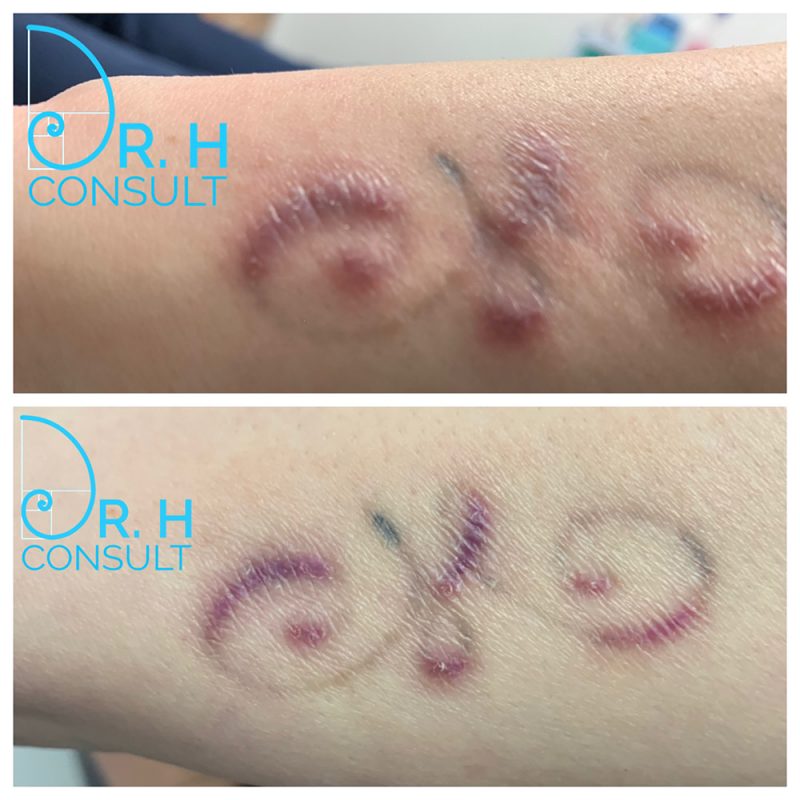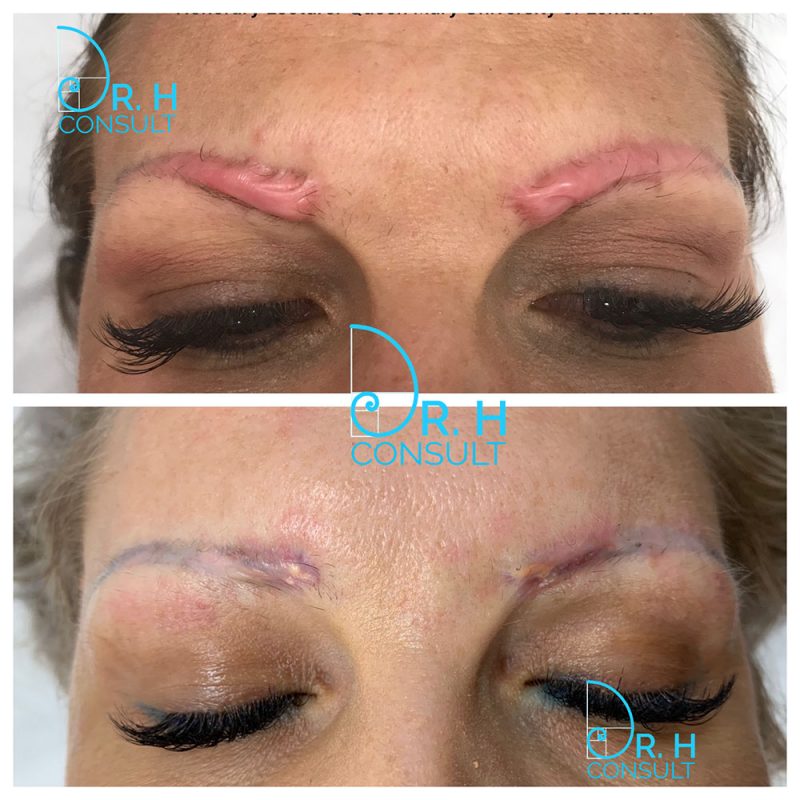INTRODUCTION
Hypertrophic scars are an abnormal type of scar that form as a result of trauma or injury. Hypertrophic scars are raised, thickened and wider when compared with normal scar. As a result, the appearance is often a cosmetic concern when compared to a normal scarring response. As well as being a cosmetic concern they can also be itchy and painful. Hypertrophic scars differ from keloid scars in that they do not grow beyond the margins or the wound or injury.
Hypertrophic scars are more prevalent in the following:
- Darker skin types
- Areas where skin heals under tension
- Ears/Chest/shoulders/upper arms
- Following surgery – breast implant scars / abdominal procedure scars
- Areas of constant flexion and extension such as skin over joints.
Hypertrophic scars are essentially overgrown scars. The body has failed to recognise when to stop the scarring process. Myofibroblast cells responsible for wound healing have produced too much collagen and an overgrown scar. The ongoing scarring process causes low grade inflammation and blood vessel formation. This inflammation and blood vessel formation cause the scar to appear red. It also results in irritation, itch and pain.
Hypertrophic scars are often caused by burn injuries. Acne often results in indented scars but can also cause raised hypertrophic scars. Body piercings and small cuts can result in healing with hypertrophic scarring. Surgical scars can also become hypertrophic.
Dr Hussein uses multiple techniques and laser therapy in the cosmetic and symptomatic management and removal of hypertrophic scars.
BEFORE & AFTER PHOTOS
PROCEDURE DETAILS
Techniques to treat hypertrophic scars:
Steroid Injection
Scar injection with steroid or 5 Fluorouracil (5 FU) has long been a mainstay treatment in the NHS. This causes interference and cessation of the ongoing scarring process. As a result the hypertrophic scar will shrink following treatment. One of the main problems with this treatment is that larger and thicker scars are difficult to uniformly inject. This is because scar tissue is hard and inelastic. As a result, uneven injection often results and this causes slow patchy scar improvement. The thicker and larger the scar, the harder it is to treat by injection alone.
Cryotherapy & Steroid injection
Steroid injection can be made easier through the adjunctive use of cryotherapy. Cryotherapy or freezing of the scar with liquid nitrogen spray helps to cause swelling (oedema) of the scar. As a result, the scar becomes more spongy in consistency and the steroid is more easily and uniformly administered. This combined technique results in a more complete and uniform scar reduction in fewer sessions.
Vascular Laser and Steroid Therapy (PDL and steroid / KTP laser and steroid / NdYAG Laser and Steroid)
Laser enhances treatment of hypertrophic scars by shutting down the blood supply that fuels the scarring process. This results in a stopping of the uncontrolled scarring process. For flatter thinner hypertrophic scars laser may be a sufficient treatment in itself. In thicker hypertrophic scars the vascular laser is combined with steroid injection. The laser helps to shut down the fueling blood supply synergistically with the steroid injection. It also causes swelling of the scar tissue making the steroid injection much more uniform and complete. Combining vascular laser and steroid injection results in a much faster resolution of hypertrophic scars. The overall final result is better and fewer treatment sessions are required to resolve the scar.
Fractional Ablative (CO2 and Erbium) laser
These lasers can be used in two different ways. They work by drilling fine channels into the scar. By drilling these channels, a process of scar remodelling is triggered. This in itself results in a progressive transition of scar tissue into tissue that more closely resembles normal skin. This is why fractional ablative lasers are used to modify and improve the damaged tissue found in skin grafts and atrophic acne scars. Fractional ablative lasers are often used by Dr Hussein in the management of acne scars and to blend traumatic or surgical scars with surrounding tissue using laser induced scar remodelling. Fractional ablative laser is also used (Lumenis Deep FX / Lumenis SCAR FX / Sciton Profractional Ertbium YAG) to help create channels within thick scars in order to enhance steroid penetration onto the scar.
Fully Ablative Laser – Scar Debulking (Erbium YAG & CO2 laser)
Fully Ablative laser is not a specific treatment for hypertrophic or keloid scars. In fact, if treatment of a hypertrophic or keloid scar is attempted using an ablative laser alone then recurrence of the scar is almost certain. For large and bulky keloid and hypertrophic scars the fully ablative laser can be used to debulk and reduce the size of the scar. Once this has been done and the debulked scar has healed for a short period of time the residual scar can then be more efficiently treated with the above methods. This technique is essentially used to speed up the scar treatment process.



